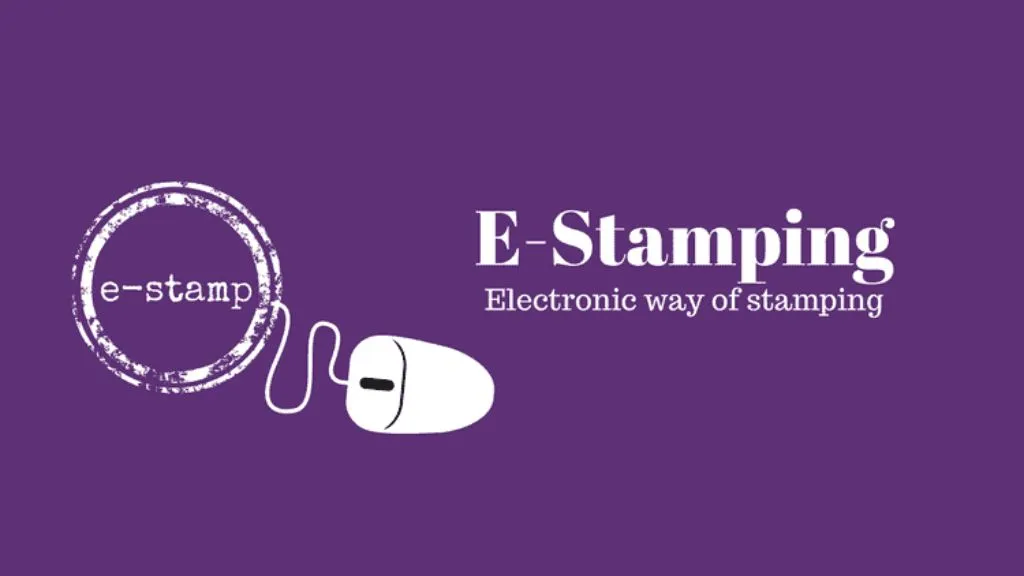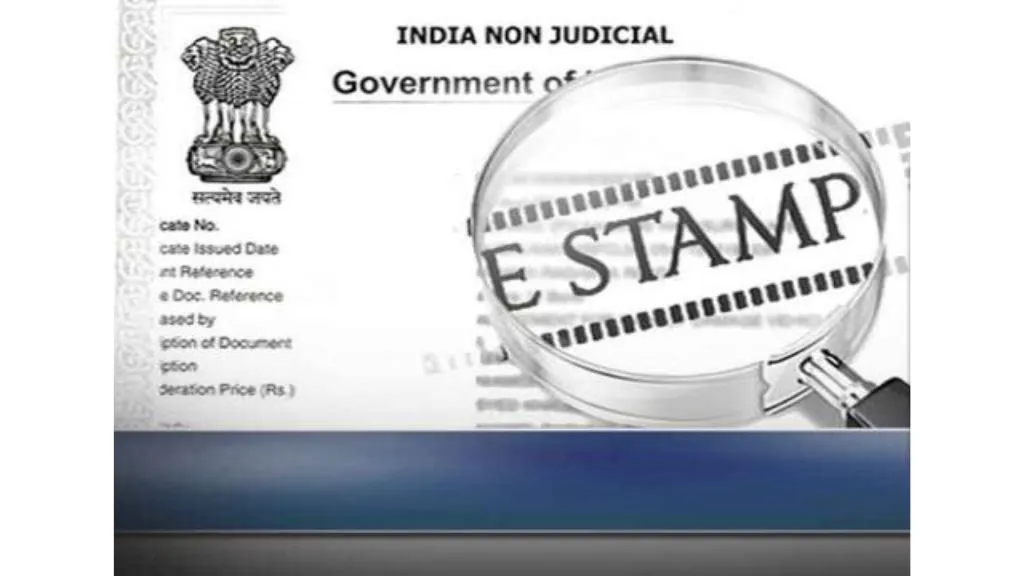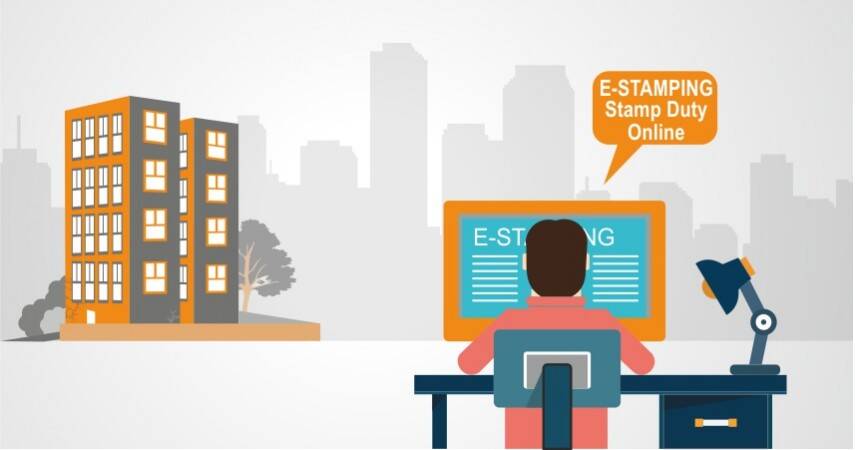
E-stamping has revolutionized the property registration process in India, replacing traditional paper-based stamp duties with a faster, safer, and more efficient digital method. This system ensures secure and tamper-proof payment of stamp duty, reducing the risks of fraud and errors.
Whether you’re buying property, executing agreements, or registering legal documents, understanding the e-stamping process is essential. In this article, we’ll explore what e-stamping is, how it works, its benefits, and the steps involved in using e-stamping registration in India for properties .
Stamp Duty: What Is Stamp Duty In India?
In India, at the time of purchase, selling, or even leasing your property out to another party, it is mandatory to pay what is called a ‘stamp duty‘ to the central or the state authorities to legalize the transaction of the property. In case you fail to pay the stamp duty, the purchase, selling, or leasing of the property will be held illegal in the eyes of the law.
A stamp paper for property registration, on those lines, is the paper through which the stamp duty payment is made. Stamp papers in India are used for sale deeds, transfer of immovable property, affidavits, agreements, deeds, wills, etc. Once the stamp duty payment is made via stamp paper, it acts as the official proof that the authorities have been paid the required fee.
Where Should I Pay The Stamp Duty?
Stamp duty, in the olden days, could only be paid in the traditional method of exchanging cash, however, stamp duty can now also be paid online in the form of e-stamping. E-stamping, also known as electronic stamping, is a process that is carried out online, and hence, is the easiest and the quickest way to pay stamp duty.
Online E-Stamping in India

E-Stamping in India was announced in the year 2013 by the government in an attempt to reduce counterfeits and human errors that came with physical or traditional, offline stamping. Before we get to how to get e-stamping done in India, it must be noted that the only governing body authorized for all aspects of e-stamping online, right from user registration to maintenance of records is the Stock Holding Corporation of India Limited (SHCIL).
Advantages of Online E-stamping in India
- No specific denomination is required for e-stamping in India.
- You can verify the veracity of the e-stamping certificate using the inquiry module.
- The e-stamping certificate has a unique identification number (UIN) so it can never be tampered with.
- The e-stamping certificate can be generated within minutes.
What is SHCIL? What is the Role of SHCIL?

SHCIL stands for Stock Holding Corporation of India Ltd. It is the largest leading depository participant in India that was incorporated as a public company in the year of 1989.
SHCIl jointly promoted as well as owned all banks and financial institutions of India including TOICL, UIC, NIC, NIA, GIC, SU-UTI, LIC, IFCI Ltd, etc. The company is a subsidiary of IFCI Ltd that held 52.86 stakes in the company as of March 31, 2019.
SHCIL pioneered e-stamping services in India that made payments to the government a hassle-free process. SHCIL is one of the early entrants in the depository services with a client base of over 650000 accounts.
SHCIL is also the only CRA (Central Record Keeping Agency) appointed by the Indian government that is responsible for:
- Overall e-stamping maintenance and operations
- Balance administration
- User registration
- Appointing ACCs (Authorised Collection Centres).
What is an ACC (Authorised Collection Centres)?
ACC comprises agents who are appointed by SHCIL and act as an intermediary between the stamp duty payer and SHCIL. People from scheduled post offices and banks can become ACCs.
Which of The Indian States Allow Online E-Stamping?
SHCIL, designated as a CRA by the Finance Ministry of India, provide e-stamping services in 22 states of India. Here is a list of the Indian states (in alphabetical order) that allow e-stamping online:
- Andaman and Nicobar Islands
- Andhra Pradesh
- Assam
- Bihar
- Chhattisgarh
- Chandigarh
- Dadra and Nagar Haveli
- Daman and Diu
- Delhi
- Gujarat
- Himachal Pradesh
- Jammu and Kashmir
- Jharkhand
- Karnataka
- Odisha
- Puducherry
- Punjab
- Rajasthan
- Tamil Nadu
- Tripura
- Uttar Pradesh
- Uttarakhand
How to Get Online E-Stamping Done in India?
If you have recently purchased, sold, or leased property in India, here are the steps for e-stamping online you’d need to follow-
Visit the official SHCIL website: As soon as you visit the e-stamp services page on the Stock Holding Corporation of India Limited (SHCIL) website, you will get a pop-up stating all the states that allow e-stamping online in India
Select your state: If your state allows e-stamping online, select your state from the dropdown list.
Fill out the application form: On the homepage, click on ‘Downloads’ and select the application suitable for you. For example, if you need to fill an application that requires a stamp duty of Rs. 1000, simply download the form for “Stamp duty payment more than Rs. 501” and fill it up.
Submit the form: Once the form is filled out, simply submit it along with the payment required for the stamp certificate, and your e-stamping is done!
What are the Different Modes of Payment for E-stamp?
A client can pay stamp duty online through e-stamping service in the following modes:
- account-to-account transfer
- NEFT
- RTGS
- Pay order
- Demand Draft (DD)
- Cheque
- Cash
How to Pay for Stamp Duty Online For E-Stamping?

Online e-0stamping can be paid for via cash, cheque, demand draft, pay order, RTGS, NEFT, or an account to account transfer. If you want to pay for the stamp duty traditionally and offline at an ACC (Authorized Collection Center, typically state-authorized banks), only cash, cheque, or a demand draft (DD) is accepted.
Here’s How To Pay Stamp Duty Online For E-Stamping:
- Step 1: Login/ Sign Up- If you are a new user of the SCHIL (Stock Holding Corporation of India Limited) website, click on ‘Register Now’ to proceed. (If you are an existing user, enter your log-in credentials and follow the process step 4 onwards)
- Step 2: Enter the required details- You will need to create a user ID, a password, a security question, and then fill in your bank account details.
- Step 3: Activate the User ID- You will receive an activation link on your registered email address. Activate the user ID and you can then use the same login and access the services.
- Step 4: Select the state- Now, select your state from the drop-down menu and then click on the ‘Nearest SHCIL Branch’ option. You will be prompted to input a few necessary details like First Party Name, Second Party Name, Article No, Stamp Duty Paid By, and Stamp Duty Amount.
- Step 5: Generate the acknowledgment number- Once all the details are submitted, you will be able to generate an “Online Reference Acknowledgement Number” of the amount paid via Net Banking/Debit Card/NEFT/RTGS/FT.
- Step 6: Get a print of the e-stamp certificate- Finally, you will just need to visit a Stock Holding Branch with your Online Reference Acknowledgement Number and take a print of the e-stamp certificate.
Is E-Stamping Mandatory in Bangalore?
E-stamping is not yet mandatory in Bengaluru, however, the Karnataka government is taking steps to transition and to make e-stamping compulsory. The government of Karnataka is aiming to totally eliminate franking (offline payments of stamp duty). The government has taken this step considering the following benefits:
- E-stamping can put an end to stamp duty-associated frauds, given all applicants are given a unique certificate number.
- The registration department also believes that Karnataka can generate higher revenues if e-stamping is made mandatory.
Few More Facts About E-stamping in India
- In the state of Maharashtra, stamp duty is not paid via SCHIL but through an eSBTR (electronic Secured Bank Treasury Receipt), an online payment service.
- If an e-stamp payment is cancelled, you can avail a refund only if you visit a SCHIL office.
- No duplicate copies of an e-stamp will be issued.
- Within 2 working days, you will be couriered the e-stamp certificate.
- User registration on SCHIL is free of cost.
Final Thoughts: How To Verify An E-Stamp Online In India?
Once you get your e-stamping certificate, it can be verified on the homepage of the website of SHCIL by clicking on ‘Verify E-Stamp.’
- Just click on ‘verify e-stamp on the home page
- Click on it to continue
- Enter the state, certificate number, type of stamp duty, date of issuance, and session ID
- Click on ‘Verify’ and your e-stamping will be verified!






